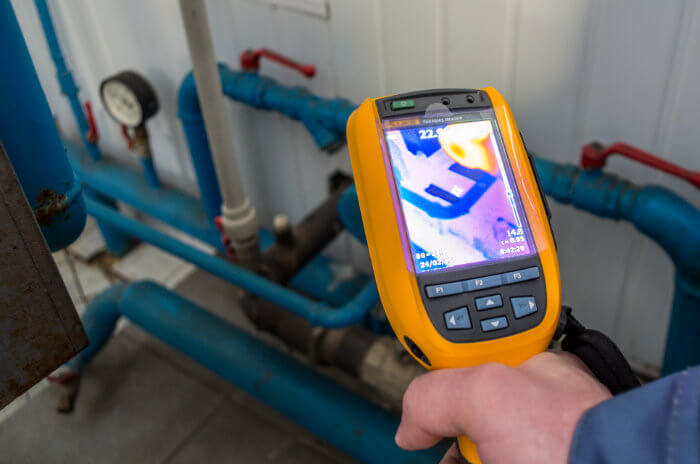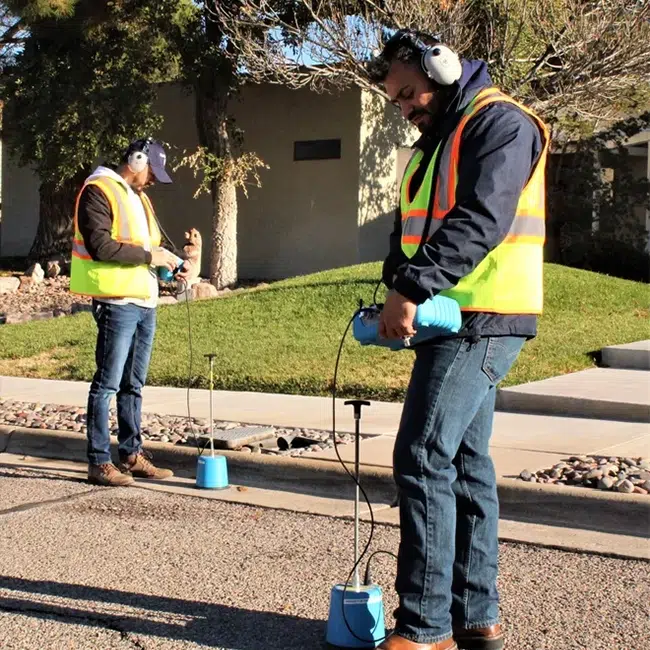Why Timely Water Leak Detection is Important for Maintaining a Healthy And Balanced Home
Wiki Article
Innovative Solutions for Early Detection of Water Leaks in Buildings and Framework
As the stability of buildings and infrastructure is vital, the challenge of very early discovery of water leaks has actually spurred innovative remedies that assure to revolutionize the way we secure against potential problems. From innovative leakage discovery technologies to the implementation of IoT sensing units for real-time surveillance, the landscape of leakage prevention is developing swiftly. Machine learning algorithms supply a glimpse into the future of leakage forecast, while thermal imaging presents a non-intrusive approach for pinpointing surprise leakages. Automated water circulation analysis systems are reshaping how leakages are determined and attended to, leading the way for a positive technique to water leakage discovery. Each of these services holds the key to ensuring the integrity and longevity of our developed atmosphere, motivating a shift in the direction of a much more sustainable and efficient future.Advanced Leakage Detection Technologies
Advanced leakage detection innovations, geared up with innovative sensing units and algorithms, play an essential role in quickly recognizing and identifying water leaks in numerous setups. These modern technologies use a combination of acoustic, thermal, and electro-magnetic noticing methods to spot leakages properly. Acoustic sensing units detect the audio of escaping water, enabling precise localization of the leak source. Thermal imaging identifies temperature level changes triggered by water leakage, giving another efficient technique for leak identification. Electromagnetic sensors can determine adjustments in electro-magnetic areas brought on by water, providing yet another layer of leak discovery capability.
IoT Sensors for Real-Time Surveillance
In the world of modern-day water leakage discovery, the integration of IoT sensing units for real-time monitoring stands for a pivotal improvement in boosting proactive leakage detection abilities. These sensors provide continuous tracking of water supply, giving real-time information on water circulation rates, stress variations, and temperature level adjustments. By leveraging IoT technology, these sensors can find even the tiniest anomalies in water usage patterns, making it possible for very early recognition of prospective leakages prior to they escalate right into significant concerns.IoT sensors transfer data to a centralized system, where sophisticated formulas analyze the information and produce signals or notifications when abnormalities are spotted. This real-time monitoring ability allows homeowner or facility supervisors to immediately resolve leakages, decreasing water damages, minimizing repair service prices, and conserving water resources.
In addition, IoT sensing units can be incorporated with structure management systems, enabling automatic reactions to found leaks, such as turning off water shutoffs or triggering pumps to minimize the influence of leaks. On the whole, the application of IoT sensing units for real-time surveillance substantially boosts the efficiency and efficiency of water leak discovery in structures and infrastructure.
Machine Discovering Algorithms for Leak Forecast

One trick benefit of using device learning for leak prediction is its capability to continuously find out and boost its accuracy with time. As more data is accumulated and fed into the formula, it can fine-tune its predictions and adjust to transforming problems, eventually boosting the reliability of leakage detection systems.
Furthermore, artificial intelligence formulas can aid in identifying refined signs click here for more info of leaks that may go unnoticed by traditional tracking approaches. water leak detection. By evaluating complex data embed in real-time, these algorithms can supply early cautions and notifies, permitting timely intervention and precautionary maintenance to mitigate prospective water damage and associated expenses
Utilizing Thermal Imaging for Leakage Discovery
Thermal imaging modern technology provides an encouraging technique for finding water leaks in different systems and facilities. By using infrared radiation and temperature level differences, thermal imaging electronic cameras can recognize surprise leakages that are not quickly noticeable to the nude eye.One of the key advantages of thermal imaging for leak detection is its non-intrusive nature. Unlike typical methods that might require burglarizing wall surfaces or moved here floorings to situate leakages, thermal imaging enables non-destructive testing. This not only conserves time and lowers prices yet likewise reduces disturbance to the structure or framework being examined. Furthermore, thermal imaging can swiftly scan big locations, offering a detailed summary of possible leak resources in a timely fashion. Overall, using thermal imaging technology boosts the effectiveness and precision of water leakage detection, making it an important device for preserving the integrity of buildings and facilities.
Automated Water Circulation Analysis Equipments
How can automated water circulation evaluation systems change the detection and monitoring of leaks in various systems and facilities? Automated water circulation analysis systems provide a proactive approach to leakage detection by continuously keeping track of water circulation rates and patterns. By establishing baseline data, these systems can promptly identify inconsistencies that may indicate a leakage, allowing prompt treatment to avoid substantial damages.These systems make use of innovative algorithms to assess real-time information and give prompt signals when anomalies are discovered, permitting swift activity to be taken. In addition, automated water flow evaluation systems can be incorporated with structure monitoring systems or IoT platforms, improving general effectiveness and allowing remote surveillance abilities.
In addition, the data gathered by these systems can be utilized for anticipating upkeep functions, aiding to identify possible powerlessness in the infrastructure before leaks happen. Generally, the application of automated water circulation analysis systems can substantially improve leak discovery and management methods, inevitably causing cost savings, decreased water wastage, and enhanced sustainability in buildings and facilities.

Verdict
Finally, the integration of advanced leak detection like this modern technologies, IoT sensors, equipment learning algorithms, thermal imaging, and automated water flow analysis systems uses cutting-edge solutions for early discovery of water leaks in structures and infrastructure. These innovations allow real-time surveillance, prediction of leaks, and efficient discovery approaches to avoid water damage and wastefulness. Executing these options can assist in keeping the stability and sustainability of water systems in different setups.Report this wiki page